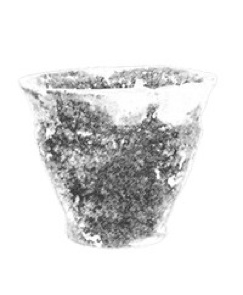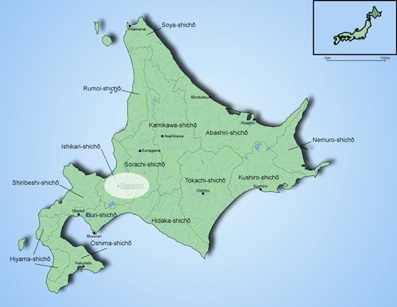Satsumon in Hokkaido
The Jomon project filled gaps in our knowledge about the early phases of human life in northeastern Japan, but the later prehistory of the area, particularly Hokkaido, was still not known that well. We particularly knew little about plant use and human ecology of the later periods. The native people of the area, the Ainu, were well known in the literature as hunter-gatherer-fishers who lived in stable communities who maintained a presence in their villages year-round. In the early 1980s archaeologists viewed them as examples of "affluent foragers" or people without agriculture who lived a relatively comfortable life in their rich north temperate environment. Our palaeoethnobotanical study was meant to examine one part of this "affluent" existence. I thought it would also give us a sense of the recent end of the Hokkaido chronology. The Satsumon were recognized as the ancestral Ainu so research on the Satsumon would also link the earlier part of the Hokkaido chronology to the living Ainu. It all seemed so straight forward in the early 1980s. Alas, archaeology has a habit of making things complicated.

No sooner had we begun the project but it was clear that farming was part of the ancestral Ainu livelihood in southwestern Hokkaido as early as A.D. 700. We found more than traces of crops -- huge collections of crop remains were recovered from several sites. One, the Sakushu-Kotoni-Gawa (River) site, contained masses of cultigens representing nearly every crop known to have been grown in early East Asia. We have been carefully documenting the crop remains and reinterpreting Hokkaido prehistory based on these discoveries. The Ainu people have a fascinating past that shares a great deal more with the history of their Japanese neighbors (i.e. agriculture) than anyone had thought.
As a Canadian archaeologist, the Hokkaido archaeological record converges in many ways with the record in Ontario. Hokkaido is environmentally similar to Ontario, being at the same latitude In Ontario, the Iroquoan ancestors began agriculture a few centuries earlier than in Hokkaido, but agriculture was introduced to both areas from the outside. By the 12th century A.D. in both areas, cultures recognizable as Iroquoian and Ainu had consolidated, both with mixed economies of gathering, hunting, fishing and food production. Both groups’ territories were later colonized by outsiders with horrific consequences, Hokkaido by the Japanese and Ontario by Europeans.




Satsumon Pot